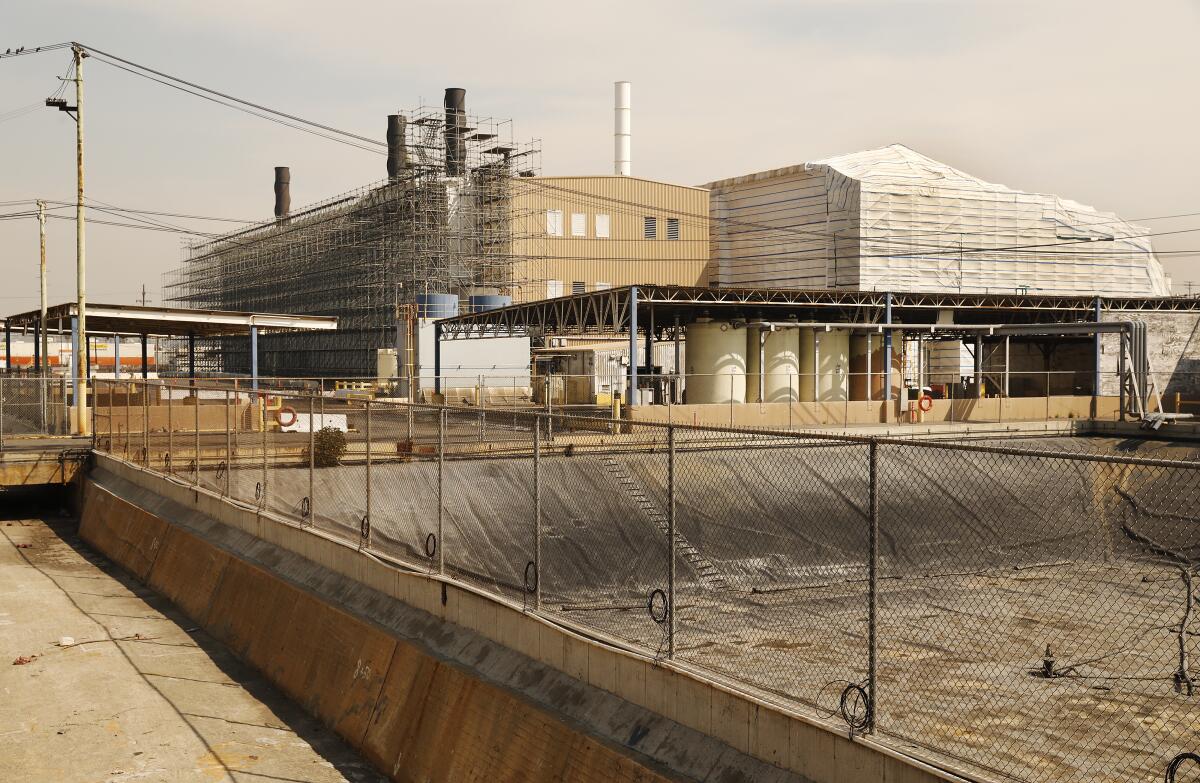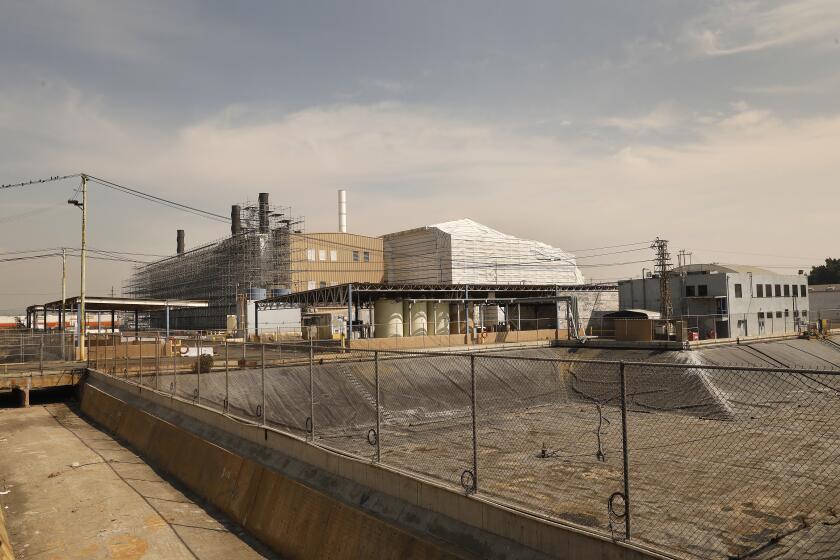California toxics agency to publish lead cleanup reports for homes surrounding Exide plant

- Share via
After heated criticism from community groups and environmental justice advocates, the California Department of Toxic Substances Control has announced that it will publish detailed records of work done to remove lead-contaminated soil from properties surrounding the former Exide battery recycling plant in southeast Los Angeles County.
The records, which describe the removal of soils contaminated with brain-damaging lead, were initially intended to be mailed to residents after remediation work was conducted, but an investigation by The Times found lapses in the notification process. The department is in the process of making the records available in an interactive map on its website. The information details the cleanup status of roughly 10,000 properties, as well as lead levels.
Publication of the information marks a new level of transparency from state officials, who have been accused of failing to effectively manage one of the largest toxic cleanup projects in California history.
So far, the state has overseen the cleanup of more than 4,600 properties. State guidelines dictate that contractors should excavate soil from properties until the lead concentration is below 80 parts per million, or dig to a depth of 18 inches. The soil removed from the property is then replaced with noncontaminated fill.
A investigation published in February found contractors failed to meet the lead concentration and depth standards in more than 500 of 3,370 cleaned properties. The state toxics agency initially argued that underground objects, such as pipes or tree roots, may have prevented contractors from digging to specified depths.
The department insisted that a failure to meet cleanup standards did not mean a home was unsafe, because adding clean topsoil would prevent exposure to lead contamination, unless the buried soil was unearthed.
Agency officials said homeowners were informed when work crews failed to achieve the cleanup goals. Every homeowner, they said, was told they could request a document describing the details of the cleanup of their property.
California’s budget proposal commits $67 million to clean thousands of lead-contaminated parkways near the former Exide battery smelter.
However, The Times spoke with more than a dozen residents and homeowners of failed cleanups who were unaware that their home had been flagged or that they could request additional information.
DTSC has recently uploaded more than 800 reports to the agency’s website, with more to be uploaded in the coming weeks.











